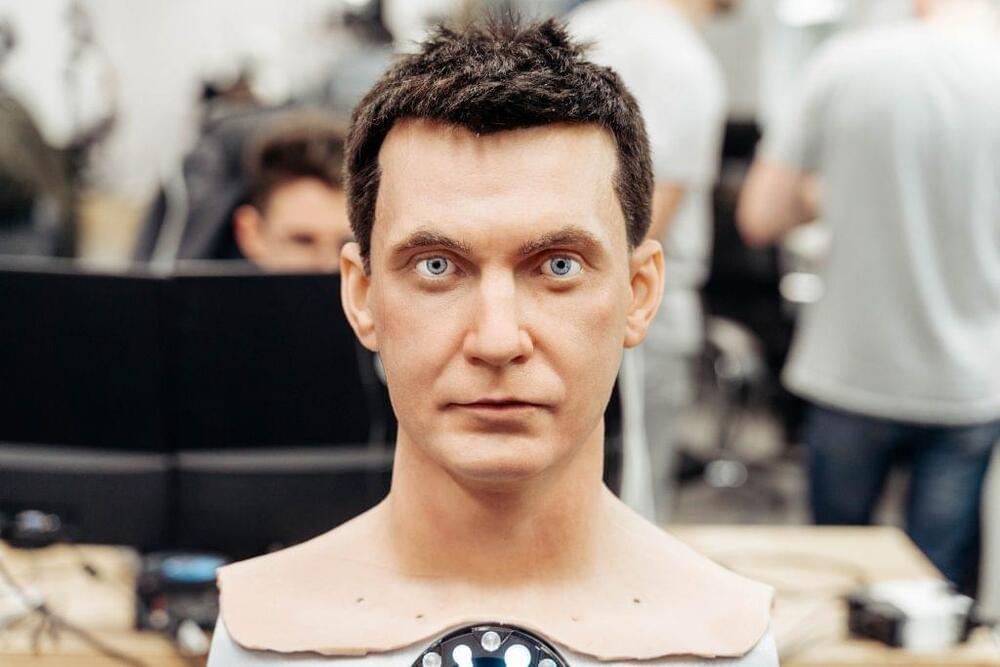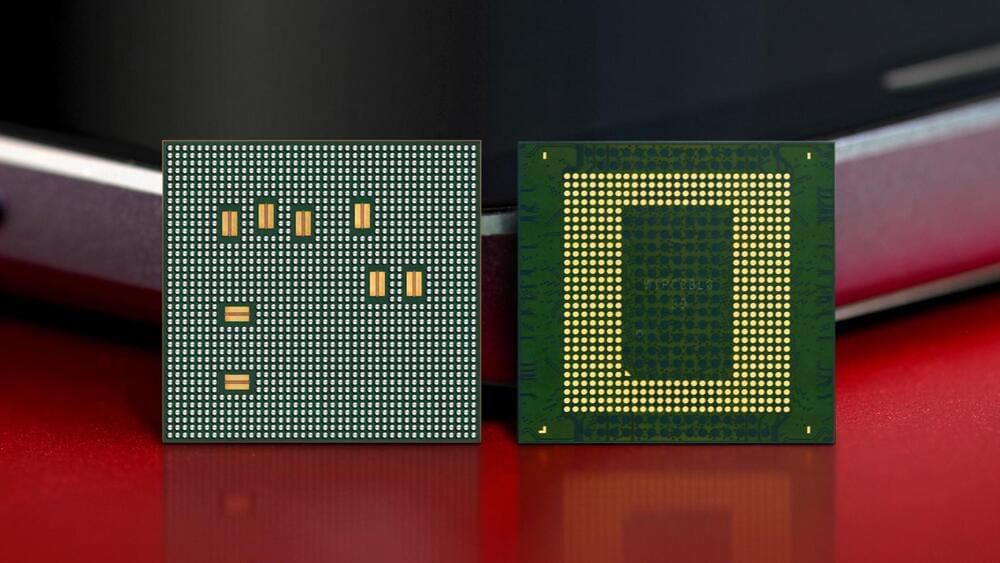Three on-demand sessions of strategy, technical insights, best practices, and real-world examples – to improve cloud security, achieve compliance, respond to threats faster, and increase productivity.



Company received over 20,000 applications, and our client has decided to suspend the request collection. It will take up to 12 month to make the decision. Details: https://promo-bot.ai/media/humanoid_project/ Last week the manufacturer company of Promobot robots was seeking a face for a humanoid robot-assistant which will work in hotels, shopping malls and other crowded places. The company was ready to pay out to somebody willing to transfer the rights to use one’s face forever.
As of Monday, it appears that Promobot has stopped accepting applications for the opportunity. Additionally, further details regarding the project seem to have been removed from their site.
“The Promobot company wants to say thanks to everyone who responded to participation in the project. Today we have received over 20,000 applications and our client has decided to suspend the request collection… Those who didn’t have time to submit an application, please no worries, we are having more projects upcoming. Subscribe to our Instagram and stay tuned.” explained an update on the Promobot website.

Canada’s first commercial Small Modular Reactor (SMR)
Ontario Power Generation (OPG) has selected the BWRX-300 small modular reactor (SMR) for the Darlington new nuclear site, and will work with GE Hitachi Nuclear Energy (GEH) to deploy the reactor. Canada’s first commercial, grid-scale, SMR could be completed as early as 2028.
OPG and GEH will collaborate on SMR engineering, design, planning, preparing licensing and permitting materials, and site preparation activities. Site preparation will begin in the spring of 2022, pending appropriate approvals, OPG said. It aims to apply to the Canadian Nuclear Safety Commission (CNSC) for a construction licence by the end of next year.
Darlington is the only site in Canada currently licensed for new nuclear: OPG was granted a site preparation licence by the CNSC in 2012, after completion of an environmental assessment which included public involvement, but reductions in forecast electricity demand led to a decision to defer plans for new build. OPG last year announced it was resuming planning activities for additional nuclear power generation via an SMR at the site, rather than a large conventional reactor, as previously envisaged. The CNSC recently granted a 10-year renewal to the site preparation licence, which had been due to expire in August 2022.
A thorough breakdown on the process’ that produce light and lights existence and behavior in nature.
Join us on Patreon!
https://www.patreon.com/MichaelLustgartenPhD
Papers referenced int the video:
Joint distribution of lipoprotein cholesterol classes. The Framingham study.
https://pubmed.ncbi.nlm.nih.gov/6573877/
Long-term coronary heart disease risk associated with very-low-density lipoprotein cholesterol in Chinese: the results of a 15-Year Chinese Multi-Provincial Cohort Study (CMCS)
https://pubmed.ncbi.nlm.nih.gov/20223457/
Red blood cell distribution width and cardiovascular diseases.
https://pubmed.ncbi.nlm.nih.gov/26623117/
Red blood cell distribution width is significantly associated with aging and gender.
https://pubmed.ncbi.nlm.nih.gov/24897405/
Red cell distribution width associations with clinical outcomes: A population-based cohort study.


The Israeli spyware maker in the Pegasus surveillance scandal said Friday it was investigating reports the firm’s technology was used to target iPhones of some US diplomats in Africa.
Apple has begun alerting people whose phones were hacked by NSO’s spyware, which essentially turns handsets into pocket spying devices and sparked controversy this year after reportedly being used on activists, journalists and politicians.
“On top of the independent investigation, NSO will cooperate with any relevant government authority and present the full information we will have,” the firm said in a statement.

This paper suggests that ATP release induced by the SARS-CoV-2 virus plays a key role in the genesis of the major symptoms and complications of COVID-19. Infection of specific cells which contain the Angiotensin-Converting Enzyme 2 (ACE2) receptor results in a loss of protection of the Mineralocorticoid Receptor (MR). Local activation by cortisol stimulates the release of ATP initially into the basolateral compartment and then by lysosomal exocytosis from the cell surface. This then acts on adjacent cells. In the nose ATP acts as a nociceptive stimulus which results in anosmia. It is suggested that a similar paracrine mechanism is responsible for the loss of taste. In the lung ATP release from type 2 alveolar cells produces the non-productive cough by acting on purinergic receptors on adjacent neuroepithelial cells and activating, via the vagus, the cough reflex. Infection of endothelial cells results in the exocytosis of WeibelPalade bodies. These contain the Von Willebrand Factor responsible for micro-clotting and angiopoietin-2 which increases vascular permeability and plays a key role in the Acute Respiratory Distress Syndrome. To test this hypothesis this paper reports proof of concept studies in which MR blockade using spironolactone and low dose dexamethasone (SpiDex) was given to PCR-confirmed COVID-19 patients. In 80 patients with moderate to severe respiratory failure 40 were given SpiDex and 40 conventional treatment with high dose dexamethasone (HiDex). There was 1 death in the HiDex group and none in the SpiDex. As judged by clinical, biochemical and radiological parameters there were clear statistically significant benefits of SpiDex in comparison to HiDex. A further 20 outpatients with COVID-19 were given SpiDex. There was no control group and the aim was to demonstrate safety. No adverse effects were noted and no patient became hyperkalaemic. 90% were asymptomatic at 10 days. The very positive results suggest that blockade of the MR can produce major benefit in COVID19 patients. Further larger controlled studies of inpatients and outpatients are required not only for SARS-CoV-2 infection per se but also to determine if this treatment affects the incidence of Long COVID.
Early in the course of the SARS-CoV-2 pandemic it became clear that one of the commonest symptoms was loss of smell and/or taste. Self-reported alterations in smell and taste were detailed in a meta-analysis of 3,563 confirmed cases of COVID-19. They found that the overall prevalence of smell or taste impairment was 47% rising to 67% in patients with more severe disease. In about 20% of patients it was an isolated presenting symptom. Han et al. reviewed the pathophysiology of anosmia in upper respiratory tract infections. Many rhinovirus infections of the nasal olfactory epithelium produce post-viral anosmia which persists for weeks or months until the cell damage is repaired. Post-viral anosmia has been reported with HCoV-229E infection with the olfactory dysfunction lasting more than 6 months. This corona virus does not use ACE2 to get into cells. Conductive or obstructive anosmia is often found with the common cold virus.

